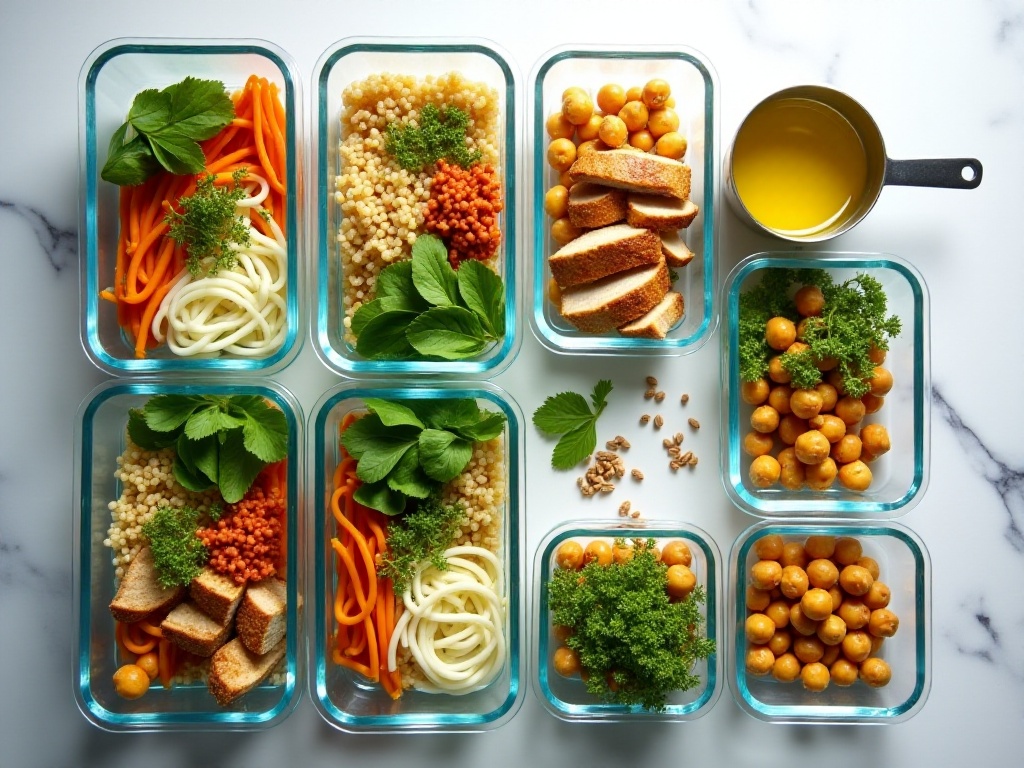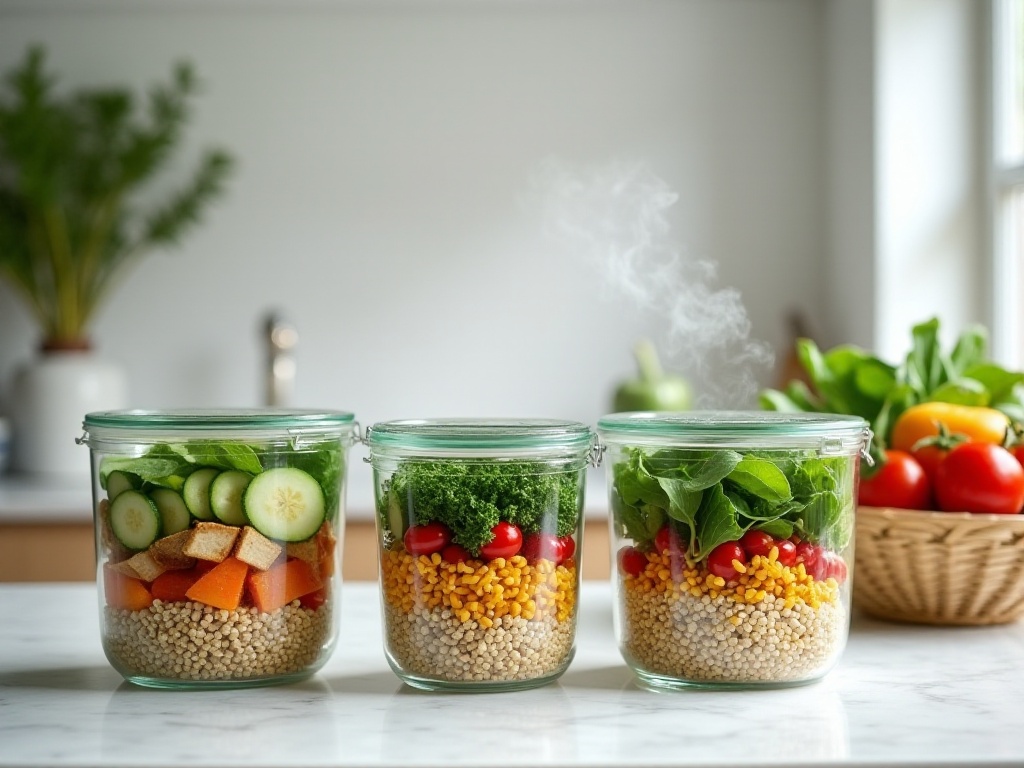Opening Thoughts
As a recent graduate who just started working, I struggled daily with what to eat. Not only are takeouts expensive, but they're also nutritionally unbalanced. The overwhelming variety of ingredients at supermarkets made choices difficult. Since starting work, I've been researching how to manage three meals a day on a budget. After more than a year of exploration, I've finally figured out some approaches that I'd like to share.
Nutrition Basics
Nutrition is truly important. When I first moved out on my own, I knew nothing about it. Breakfast was often just a steamed bun with soy milk, lunch was whatever quick meal I could get near the office, and when tired after work, I'd just order delivery. Over time, I noticed something wasn't right - I was easily fatigued, and my skin deteriorated.
Later, when I started studying nutrition, I discovered how crucial a balanced diet is. Speaking of balanced nutrition, we must discuss the three major nutrients: carbohydrates, protein, and fat.
Carbohydrates are our body's main energy source. However, not all carbs are created equal. Refined carbs like white rice and white bread, though tasty, have relatively low nutritional value. Whole grains are a better choice. Now I cook brown rice porridge or oatmeal every morning, paired with nuts and dried fruits. This breakfast is not only nutritious but filling enough to prevent hunger throughout the morning.
Protein is just as important as carbohydrates. Our body is like a house under constant repair, needing continuous building materials, and protein is the most important one. We need at least 1.2-1.5g of protein per kilogram of body weight daily. For instance, at 60kg, I need 72-90g of protein daily.
Sounds like a lot? Actually, it's not hard to achieve. One egg contains 6-7g of protein, 100g of chicken breast has 31g, and 100g of tofu contains 8g. I usually eat two eggs for breakfast and include meat or soy products for both lunch and dinner, which helps meet the requirement.
As for fat, it's a widely misunderstood nutrient. I used to think "fat-free" products were especially healthy, but now I know how superficial that view was. Good fats are crucial for our body, helping absorb certain vitamins and keeping our brain functioning normally.
There are many sources of quality fats, such as olive oil, nuts, and avocados. I particularly enjoy salmon - though expensive, it's rich in beneficial omega-3 fatty acids. I use olive oil for cooking; though a bottle might cost $10-11, it lasts a long time due to minimal usage. I also add mixed nuts to my morning oatmeal for both texture and healthy fats.
Though vitamins and minerals aren't major nutrients, they're essential for our body. The best way to get these micronutrients is to eat various colored vegetables and fruits. Red tomatoes, orange carrots, green broccoli, purple eggplants - each color represents different nutrients.

Practical Guide
After understanding basic nutrition, the next step is applying these theories to daily life.
First, weekend planning is essential. I usually spend half an hour on Saturday afternoon planning next week's menu at my computer. This habit, though seemingly troublesome, saves a lot of effort. With a plan, you won't worry about what to eat after work or wander aimlessly in the supermarket.
My planning method is this: first determine daily staples, rotating between brown rice, oatmeal, and whole wheat bread. Then select protein sources like eggs, chicken breast, fish, or soy products. Finally, match different vegetables, ensuring to eat three different colors daily.
For example, Monday's menu might be: Breakfast: Oatmeal + milk + mixed nuts + blueberries Lunch: Brown rice + steamed chicken breast + broccoli + carrots Dinner: Whole wheat bread + fried egg + lettuce salad
After planning, prepare a shopping list. I list needed ingredients and check various supermarket promotions. Many supermarkets have their own apps with weekly special offers. I often find good discounts there.
Stocking up is also a science. First, know what's suitable for storage. Dry goods like grains, beans, and nuts can be bought in bulk. Canned foods are also good choices - tuna cans, peach cans have long shelf lives. But check ingredient lists and choose products with fewer additives.
I always keep some quick but healthy foods in my fridge. For example, I'll cook 5-6 chicken breasts at once on weekends, portion and freeze them, then heat when needed. I also keep some frozen vegetables which, while maybe not as good in texture as fresh ones, are convenient and retain nutrients well.

Money-Saving Strategies
A monthly budget of $420 is neither too much nor too little. It takes some skill to eat healthily and nutritiously within this budget.
First, learn to recognize seasonal ingredients. Many people don't really understand what to eat in which season. For example, strawberries are appropriate to buy in winter and spring, but they're expensive and less tasty in summer. I can now recognize the seasonal timing for most vegetables and fruits, making purchases both economical and fresh.
Supermarket shopping has many tricks. Generally, produce is freshest in the morning, while special offers appear near closing time. I usually buy fresh vegetables and fruits on weekend mornings, and check for discounted items if I pass by supermarkets after work.
Many supermarkets also discount meat in the evening, especially fresh meat near its expiration date. These can be bought and frozen immediately. I often find chicken breast at half price, buying extra to freeze for long-term use.
Storage is also key to saving money. New vegetables need processing before storage. For lettuce, I remove yellowed outer leaves, soak in salt water, drain well, then store in preservation bags in the fridge - it can last a week this way.
I buy more of storage-friendly vegetables like carrots and broccoli. Cut them into pieces, box and freeze them, ready to cook when needed. This saves trips to the supermarket and prevents running short.
The same applies to fruits. With bananas, I buy more when they're on sale, peel and slice them for freezing when nearly ripe, using them for smoothies or with oatmeal.

Summary and Reflection
Honestly, implementing this plan wasn't easy at first. Sometimes when work got busy, I'd order takeout for several days straight. But watching money flow away on takeout was painful.
Gradually, I discovered healthy eating is a lifestyle. It's not just about saving money, but living better. Now I wake up half an hour early to prepare breakfast and spend weekend time planning and preparing ingredients. Though more troublesome, the reward is better physical condition and a more fulfilling life.
Through this approach, I've gained a deeper understanding of food. I learned about nutritional values, healthy combinations, and even cooking techniques. Now I can make ordinary ingredients taste as good as restaurant dishes.
Over this past year, I haven't compromised my well-being to save money; instead, I've become healthier through focusing on nutrition. My skin improved, energy increased, and health check indicators are all normal - it feels great.
Actually, achieving balanced nutrition while saving money mainly requires dedication. Dedication to understanding nutrition, selecting ingredients, and planning well. With persistence, you can find your own healthy eating style.
Finally, everyone's situation differs, with different budgets and preferences. These experiences are just for reference; adjust according to your circumstances. I hope everyone can find their suitable healthy eating style, maintaining both physical and financial health in these times of rising prices.







